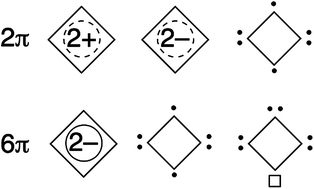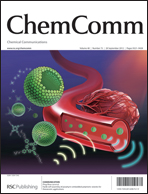The chemistry of four-membered aromatics†
Abstract
This article provides an overview on the aromatic systems of four-membered rings. These aromatic four-membered ring systems are rather exotic because of a poor correspondence between the Hückel rule and the structure of four-membered rings. Consequently, such aromatics are generally dications or dianions, to form 2π or 6π electron systems respectively. Alternatively, the use of open-shell structures or empty d-orbitals of transition metal atoms could give neutral aromatic four-membered ring systems. This paper summarizes the four-membered aromatic compounds reported to date and describes the various methods for evaluating their aromaticity.

- This article is part of the themed collection: Aromaticity

 Please wait while we load your content...
Please wait while we load your content...